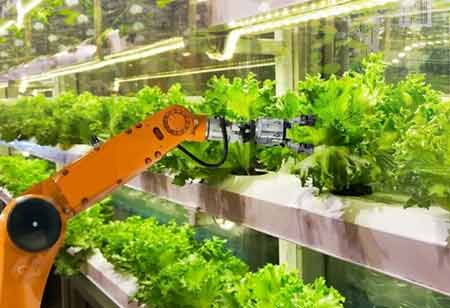Thank you for Subscribing to Agri Business Review Weekly Brief
Farmers already use AgBots: Smart Farming Aids!
Agriculture is progressively becoming a high-tech industry, drawing innovations.

By
Agri Business Review | Tuesday, March 23, 2021
Stay ahead of the industry with exclusive feature stories on the top companies, expert insights and the latest news delivered straight to your inbox. Subscribe today.
The necessity for food is ever-growing, and farmers worldwide are bridging this gap with agricultural robots.
Agriculture is progressively becoming a high-tech industry, drawing innovations. The technology used in agriculture is advancing the production capabilities of farmers by developing robotics and automation technology. Agricultural robots or AgBots are rising production yields. The technology is deployed via innovative applications such as drones.
Freeing human labor with the support of automation is the new trend across multiple industries, and agriculture is no exception. Many aspects of farming are exceptionally labor-intensive, which is an ideal niche for robotics and automation. As a result, agBots are beginning to appear on farms and performing activities, including planting, watering, harvesting, sorting, and many more. Ultimately this new wave of smart equipment makes it possible for the industry to produce higher quality food with less human effort.
Robots do not get sick or tired, and they make fewer errors. The more top-quality products can be sensed at higher speeds by the machines. As robots can be made lighter and cheaper, they can be used in various fields of agriculture. They can work around the trees, rocks, and ponds.
The idea of employing robotics in agriculture is fresh, but the possibilities for robot-enhanced productivity are enormous. They appear on the farms in different forms and increasing numbers. Shortly, one can expect the robots to perform the agricultural operations like spraying and the, mechanical weed control, the fruit picking autonomously, enabling the farmers to lessen the environmental impact and enhance the precision and efficiency.
The robots can protect human workers from the harmful effects of handling the chemicals through the system of high spraying, and they can reduce the use of pesticides. The fruit picking robots, the driver-less tractor, the sprayer, and the sheep shearing robots are all designed to ease human labor.
Traditional farming procedures struggle to keep up with the efficiencies required in the current market. But the rise of robot-assisted farming can attempt to solve the pressing challenges the agricultural industry faces.





